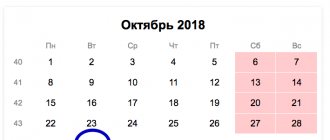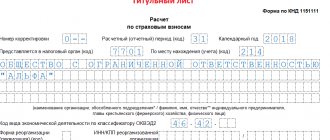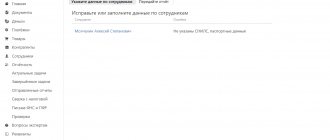Have you found yourself in the SME register? This means you have the right to lower insurance premiums. What settings will be required in 1C: Accounting are discussed in this article.
We’ll also look at:
- how preferential insurance premiums work for part-time workers if the payment is calculated below the minimum wage;
- Is it possible to automatically calculate reduced insurance premiums under GPC contracts;
- and much more.
Minimum wage at the beginning of the billing period
- 2021 is 12,792 rubles;
- 2020 is 12,130 rubles.
Amounts of the minimum wage, benefits, insurance premium rates in 2019-2021 (memo)
Are there reduced insurance premium rates for SMEs in 2021?
Federal Law No. 102-FZ dated April 1, 2020 not only introduced a reduced tariff for SMEs from April 2021, but also made amendments to the Tax Code of the Russian Federation. The list of insurance premium payers for whom reduced rates apply has been supplemented with a new category (clause 17, clause 1, article 427 of the Tax Code of the Russian Federation):
- For payers of insurance premiums recognized as small or medium-sized businesses in accordance with Federal Law No. 209-FZ dated July 24, 2007 “On the development of small and medium-sized businesses in the Russian Federation” in relation to the portion of payments in favor of an individual determined based on the results of each calendar month as an excess over the minimum wage established by federal law at the beginning of the billing period.
And also, Art. 427 of the Tax Code of the Russian Federation has been supplemented with clause 2.1, according to which for payers specified in clauses. 17, starting from 2021, the following reduced insurance premium rates apply:
1) for compulsory pension insurance:
- within the established limit value of the base for calculating insurance premiums for this type of insurance - 10%;
- above the established maximum base for calculating insurance premiums for this type of insurance - 10%;
2) for compulsory social insurance in case of temporary disability and in connection with maternity - 0%; 3) for compulsory health insurance - 5%.
Thus, SMEs in 2021 and beyond continue to apply a reduced tariff to the part of the base for a calendar month that exceeds the minimum wage.
How to fill out Appendix 5 to Section 1
The lines of this application reflect (clauses 14.3 - 14.7 of the Procedure, Article 423, clause 5 of Article 427 of the Tax Code of the Russian Federation):
- in line 010 - average number of employees;
- in line 020 - the total amount of income, which is determined according to the rules of Art. 248 Tax Code of the Russian Federation;
- in line 030 - the amount of income from activities in the field of information technology for the operations specified in clause 5 of Art. 427 Tax Code of the Russian Federation;
- in line 040 - the share of income from activities in the field of information technology in the total amount of income. The share is determined as follows: divide line 030 by line 020 and multiply by 100;
- in line 050 - the date and number of the entry in the register of accredited IT organizations.
How to tax contributions above the minimum wage at reduced rates
Every month you need to look at whether payments in favor of an individual exceed the minimum wage established at the beginning of the billing period (12,792 rubles in 2021). If they exceed, then reduced insurance premium rates are applied to part of the amount above the minimum wage according to the following scheme:
| Contributions | Bid |
| For compulsory pension insurance | And up to the maximum value of the base (1,465,000 rubles), and above - 10% |
| For compulsory social insurance in case of temporary disability and in connection with maternity | 0 % |
| For compulsory health insurance | 5 % |
When calculating insurance premiums, SMEs must indicate that they apply a reduced tariff. To do this, in Appendices 1 and 2 to Section 1, they must enter the tariff code “20”, and in Section 3, apply the category codes of the insured person: MS, VZHMS, VPMS (Order of the Federal Tax Service of the Russian Federation dated September 18, 2019 No. ММВ-7-11/ [ email protected] as amended on October 15, 2020).
How the DAM will change from 2021: average headcount, new codes and applications
Example of filling out the DAM with reduced contributions
In case of a preferential, reduced tariff, the following filling procedure must be followed. In the third section on HP codes, the basic tariff is indicated. The amount subject to regular contributions does not exceed the minimum wage. For MS – a preferential tariff is indicated.
How to apply a reduced tariff - formulas from the Federal Tax Service
After the publication of the law, accountants of small and medium-sized enterprises had many questions. Here are some of them.
How to apply a reduced tariff when calculating contributions if the regulations refer to payments, and contributions are calculated from the base?
How can I distribute amounts across applications with different rate codes?
What to do if the employee’s payments amounted to 16,000 rubles (more than the minimum wage), but 5,000 of them are disability benefits, which are not subject to taxation?
What to do if the base limit has been reached? Should non-taxable payments be distributed according to tariffs in proportion to the minimum wage and the part exceeding it?
The Federal Tax Service explained how to apply the norms of 102-FZ, and published the formulas by which SMEs must calculate contributions (letter of the Federal Tax Service dated April 29, 2020 No. BS-4-11 / [email protected] ). If we adapt them to 2021, we get the following formula:
Minimum wage payments from the beginning of the year × 30% + (base from the beginning of the year - minimum wage payments from the beginning of the year) × 15% - contributions accrued from the beginning of the year.
Minimum wage payments are the amount of payments that is less than or equal to the minimum wage at the beginning of the billing period.
For example, to calculate contributions for January, February and March, perform the following calculation:
- for January: minimum wage payments × 30% + (base for January - minimum wage payments) × 15%.
- for February: minimum wage payments for 2 months × 30% + (base for 2 months - minimum wage payments for 2 months) × 15% - contributions calculated for January.
- for March: minimum wage payments for 3 months × 30% + (base for 3 months - minimum wage payments for 3 months) × 15% - contributions calculated for January-February.
Then proceed by analogy.
When the tax base reaches the limit, tax the excess amount at a reduced rate above the limit. To do this, exclude the excess amount from the base from the beginning of the year. The procedure for calculating the taxable base in the month of excess was explained by the Federal Tax Service in a letter dated July 13, 2020 No. BS-4-11/11315.
Old tariffs for social insurance against accidents and new benefits
Federal Law No. 434-FZ dated December 22, 2020 fixed the tariff rate in 2021 at the 2021 level. Individual entrepreneurs were given the opportunity to charge only 60% of the tariff amount for the wages of disabled employees from any category.
General results: part of the benefits of 2021 was transferred to 2021, individual entrepreneurs on the simplified tax system “income minus expenses” can save on contributions from income exceeding 300 thousand rubles, but individual entrepreneurs on the OSNO will have to pay increased personal income tax. Employee reporting has changed. Follow our blog, subscribe, we will keep you up to date.
What control ratios must be met in the DAM
The situation became even clearer after the Federal Tax Service published the control ratios that must be met for this category of payers in the form of the RSV (letter of the Federal Tax Service dated May 29, 2020 No. BS-4-11 / [email protected] ).
These new control ratios complement the previous list of controls for the DAM form (letter of the Federal Tax Service dated 02/07/2020 No. BS-4-11 / [email protected] ). In the list they are listed under numbers 1.193–1.199, 2.8–2.10. Then these control ratios were supplemented once again (letter of the Federal Tax Service dated June 23, 2020 No. BS-4-11/ [email protected] ).
Let us explain what the wording of these control ratios means.
| Control ratio - wording in the letter from the Federal Tax Service | What does it mean |
| If field 001 adj. 1 rub. 1 SV = 20, then the presence of adj. 1 rub. 1 SV with value 01 in field 001 is required | If there is an application with code “20” in the calculation, then there must also be an application with code “01” |
| If in subsection 3.2.1 p. 3 SV according to FL (according to SNILS + full name indicators) field value 130 = MS, then the presence of subsection 3.2.1 r. 3 SV for this FL with a value in the field of 130 = NR required | If in section 3 of an individual there is subsection 3.2.1 with the code “MS”, then subsection 3.2.1 with the code “NR” must be present |
| If in subsection 3.2.1 p. 3 SV according to FL (according to SNILS + full name indicators) field value 130 = MS, then in subsection 3.2.1 p. 3 SV for this FL with a value in field 130 = NR line 150 for each value of field 120 = minimum wage (based on a base not exceeding the limit value) | If in subsection 3.2.1 there is a line with the code “MS”, then in the line with the code “NR” for the same month the amount in column 150 (base) should be equal to the minimum wage. This requirement applies as long as the base does not exceed the limit |
Thus, the right to apply a reduced tariff appears if the base for calculating contributions for the basic tariff is not less than 12,792 rubles. If less, the reduced rate does not apply that month.
Transfer employees from the previous period and check the DAM for free
How to fill out a calculation: examples
Let's look at an example of how to apply a reduced tariff when calculating pension insurance contributions and filling out the calculation.
Example 1. The base is less than the minimum wage
Let's take the case mentioned above: in February, an employee received 16,000 rubles, 5,000 of which were disability benefits.
Contributions for February need to be calculated only at the basic tariff, since 16,000 - 5,000 = 11,000 (< minimum wage 12,792 rubles).
If we assume that the employee is paid 16,000 rubles every month and only in April there was a non-taxable amount of 5,000 rubles, then in section 3 you need to fill out two subsections 3.2.1.
- Subsection 3.2.1 with category code HP:
- Subsection 3.2.1 with category code MS:
Accordingly, in section 1 in subsection 1.1 of Appendix 1 with tariff code “01” these amounts will be reflected as follows:
And in Appendix 1 with the tariff code “20” - this way:
Example 2. The base is greater than the minimum wage
Let’s say an employee’s monthly payments are 20,000 rubles. In February, part of this amount was an allowance of 5,000 rubles.
In this case, the base for February is greater than the minimum wage:
20 000 — 5 000 = 15 000 > 12 792
This means that there is an excess from which contributions are calculated at a reduced rate. Let's look at the formula that the Federal Tax Service requires to calculate contributions. The payment for compulsory pension provision amounts to 3,035.04 rubles:
12 792 × 2 × 22 % + (35 000 — 12 792 × 2) ×10 % – 3 535,04 = 5 628,48 + 941,6 — 3 535,04 = 3 035,04
In the calculation in section 3 this will be reflected as follows:
Example 3. Base limit reached
The requirement for an amount equal to the minimum wage in line 150 of subsection 3.2.1 with code NR must be fulfilled only on a basis that does not exceed the size of the limit.
Let’s assume that an employee’s monthly payments are 500,000 rubles; there are no non-taxable payments. In March, we will exceed the maximum value of the base for OPS (1,465,000 rubles). The amount exceeding the limit of 35,000 rubles:
1 500 000 — 1 465 000 = 35 000
The base, which does not exceed the limit, in March is 465,000 rubles (500,000 - 35,000 > minimum wage).
Using the formula for calculating contributions using a reduced tariff, the amount payable for compulsory pension insurance for March is obtained:
38,376 × 22% + (1,465,000 - 38,376) ×10% + 35,000 × 10% – 103,070.08 (contributions for January–February) = 51,535.04 rubles.
The personalized information does not reflect the base exceeding the limit and contributions from it. Here's how to fill out subsection 3.2.1 in section 3 of the calculation with the HP category code:
And here is a sample of filling out subsection 3.2.1 with the MS category code:
The base in excess of the limit and contributions from it will be reflected in subsection 1.1 of Appendix 1 with code 20 in lines 051 and 062.
Personal income tax 15% or tax “for the rich”
The combined personal income tax scale was established by Federal Law 372 of November 23, 2020.
Until 2023, tax agents were allowed to calculate tax bases from different sources of income separately. Subsequently, their consolidation is planned.
The increased rate will not affect income:
- from the sale of movable and immovable property and shares in it,
- from the value of the property received as a gift,
- insurance payments under insurance contracts and pension payments.
For tax residents of the Russian Federation, the following income tax bases will be taken into account:
- from equity participation;
- from winnings;
- from transactions with securities (including loans), derivative financial instruments (including repo transactions) and from the result on IIS;
- from participation in an investment partnership;
- from the profit of the CFC;
- from interest income on deposits;
- other income in respect of which the tax rate provided for in paragraph 1 of Art. 224 of the Tax Code of the Russian Federation in the new edition (clause 2.1 of Article 210 of the Tax Code of the Russian Federation).
It will not be possible to hide or redistribute income between several employers. Even if the income at each job does not exceed the established limit, the tax authority will sum up the income from all tax agents, and by December 1, 2022, additional personal income tax will be assessed at a rate of 15%. For these control purposes, the 6-NDFL declaration was modernized.
Citizens who independently and in good faith submit 3-NDFL for foreign income, from rental property, do not indicate in the declaration the income received from tax agents (employers). The recalculated tax taking into account income according to the 2-NDFL certificate (which was deliberately included in 6-NDFL) will be sent in a notification before December 1, 2022






